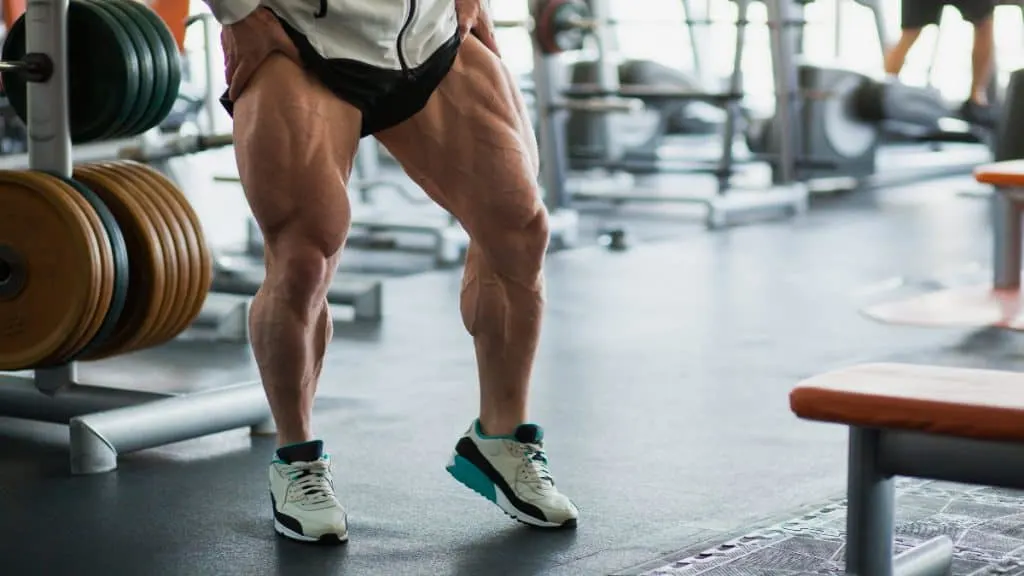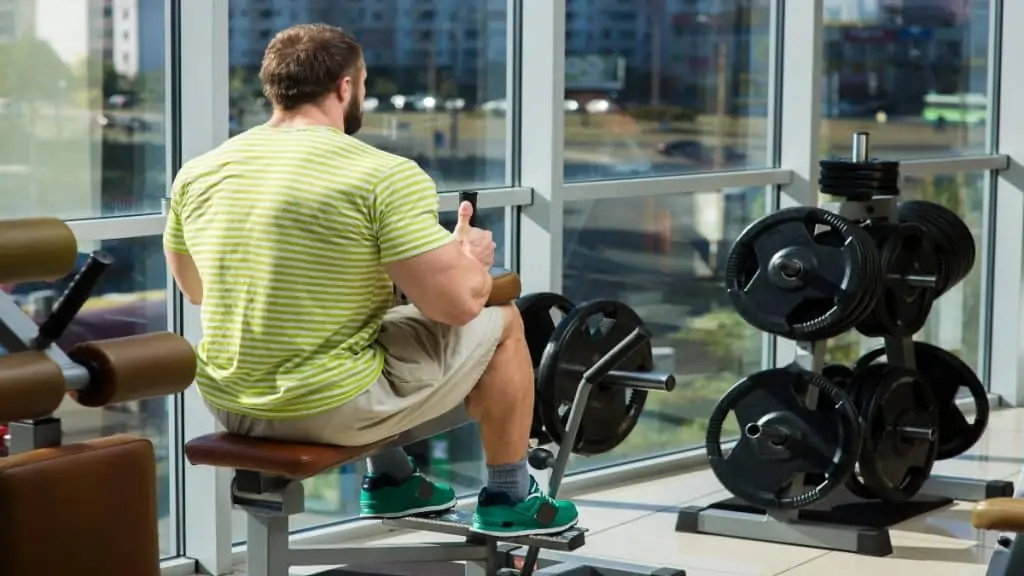What size calves are considered big? As you’ll soon discover, the answer to that question primarily comes down to the leanness of your calves.
In general, however, it’s safe to say that 20 inch calves are massive, regardless of whether they’re lean, average, or even a little chubby.
Compare Your Calves:
How big are 20 inch calves?

20 inch calves are around 4-5 inches bigger than normal for both men and women. [1]
Considering that some slim people have thighs that measure 20 inches, there’s simply no denying that a 20 inch calf circumference is truly colossal.
Whether or not having 20″ calves is desirable or not mainly comes down to two things: Your BMI and your physique goals.
For example, if you have a healthy BMI and don’t have excess body fat in general but somehow have genetically muscular calves, then that’s unlikely to be a bad thing.
Of course, having 20 in calves can make buying clothes quite tricky, so there are definitely extra lifestyle considerations to make for those with 20″ calves.
How do people get 20 inch calves?

Believe it or not, the average person with 20 inch calves didn’t build them by training their lower legs in the gym.
The reality is that most folks with 20″ calves tend to be at least somewhat overweight.
Having more body mass means that your calves have to work harder to support your body weight, and eating more food, especially if you’re consuming plenty of protein, gives your muscles the fuel they need to grow and repair.
While gaining excess body fat isn’t recommended, [2] bodybuilders who want to build 20 in calves can reach their goal faster by bulking up to a higher body weight. After all, it’s well known that all of your circumference measurements increase when you gain weight and that most definitely includes your calves, especially if you’re training them consistently.
20 inch calf case studies
Learn how these two men sculpted a 20 inch calf circumference. Suffice to say; they didn’t just rely on bodyweight calf raises!
Case study 1: CHASE
The man behind the YouTube channel CHASE posted a video of himself pumping up his 20 inch calves. Additionally, he shared a good routine for building your calves without overdoing the training volume.
You can see the routine in the video description, and you’ll notice how he recommends combining straight leg calf raises with bent leg calf raises. This is so that you train your gastrocnemius and your soleus optimally as the soleus becomes more active when your knees are bent.
He also recommends a reasonable amount of training volume (2-3 sets per exercise) but pretty high reps as well (anywhere from 15 to 50). This makes sense because the calves are already used to carrying your body weight around for prolonged periods of time, so they tend to respond exceptionally well to high rep sets that are taken close to failure.
Case study 2: John Meadows
The late John Meadows [3] made one of the most helpful and actionable calf-building videos that I’ve ever seen. In it, he gave 21 tips for growing your calves significantly, something that he managed to do himself as a bodybuilder (his calves grew from 16 to 20 inches).
He noted that a few sets of calf raises at the end of a leg workout simply isn’t going to cut it. So many lifters train intensely during their squats and leg presses but then wimp out when it comes to working their calves.
As John said himself, sometimes you just need to train your calves with more purpose if you want them to grow.
He also recommended taking all of your sets to failure unless you’re a beginner. This makes perfect sense considering that your calves are already accustomed to endurance-type work. So to make them bigger, it’s a good idea to “shock” them with a different kind of stimulus than they’re used to.
Training to failure in a moderate rep range is certainly one way to do just that (John advised training your calves 4-5 times per week with 3 sets each session if you really want to bring up your calves).
Conclusion: Is it possible for everyone to get 20″ calves?

While hard work and consistency in the gym go a long way to getting you results, not everyone has the genetics to build 20″ calves.
For example, if you have skinny ankles and struggle to gain noticeable calf size despite doing everything right, then it’s probably not possible for you to get 20 inch calves.
If, however, you have a solid frame and big ankles, then you could conceivably build 20 inch calves during your training career if you master the form and then add weight to your exercises.
Additionally, to get 20 in calves, you’d very likely need to eat in a calorie surplus for at least part of the year so that your body has the energy that it needs to create new muscle tissue.
References
- Centers for Disease Control and Prevention. (2008, October). Anthropometric Reference Data for Children and Adults: United States, 2003–2006 (No. 10). https://www.cdc.gov/nchs/data/nhsr/nhsr010.pdf
- Harvard Health. (2017, January 20). Abdominal obesity and your health. https://www.health.harvard.edu/staying-healthy/abdominal-obesity-and-your-health
- Vallejo, J. (2021, August 9). Pro bodybuilder John Meadows dies unexpectedly at 49. The Independent. https://www.independent.co.uk/news/world/americas/john-meadows-bodybuilder-dies-49-b1899579.html

